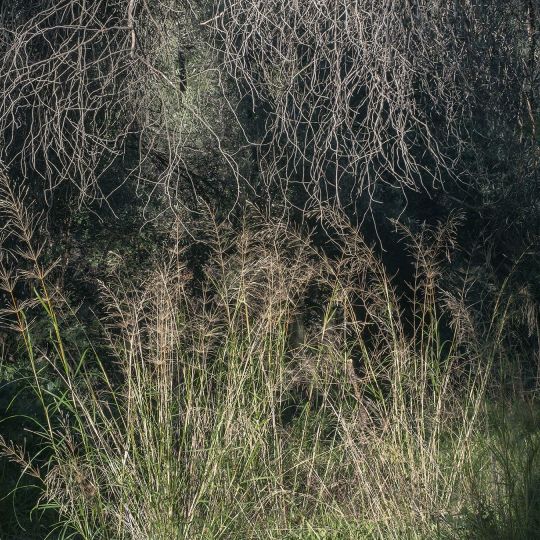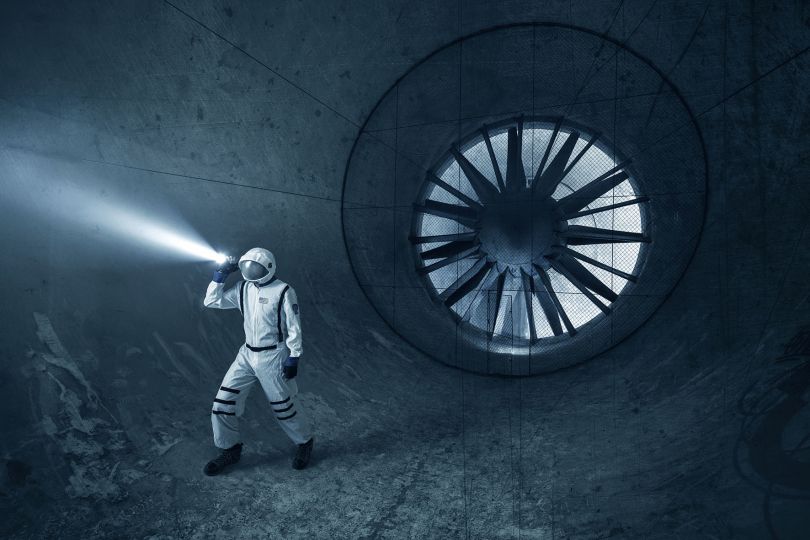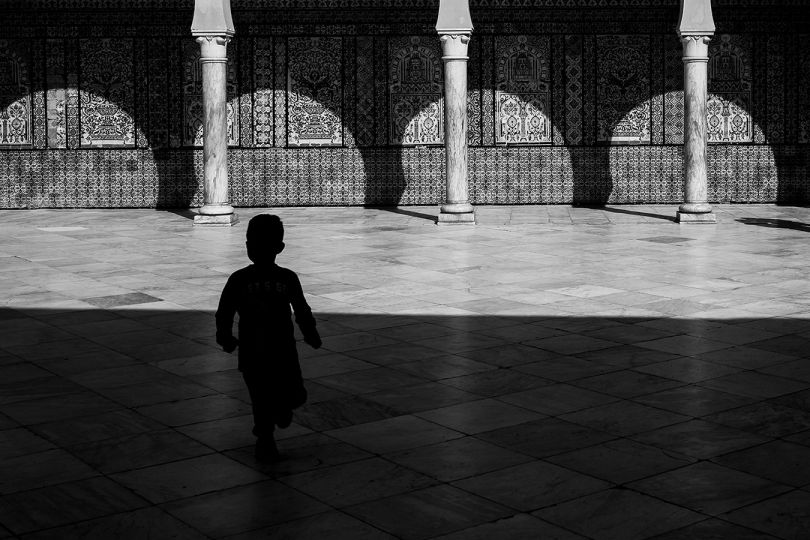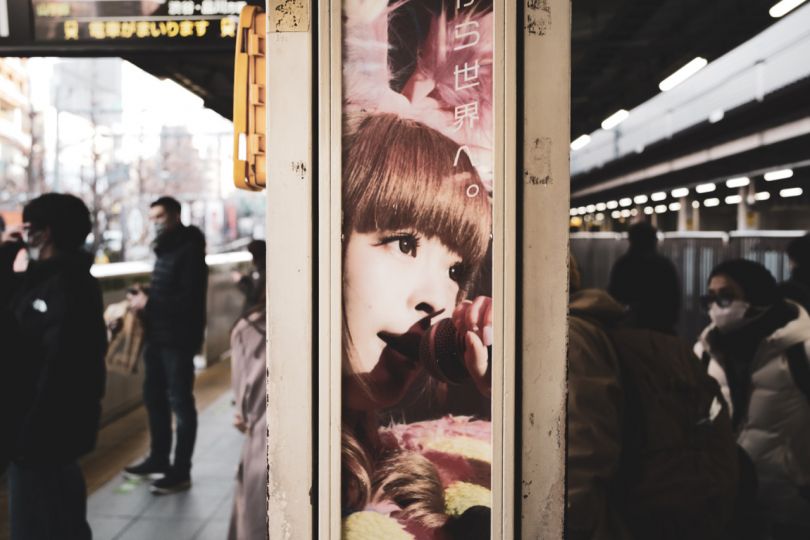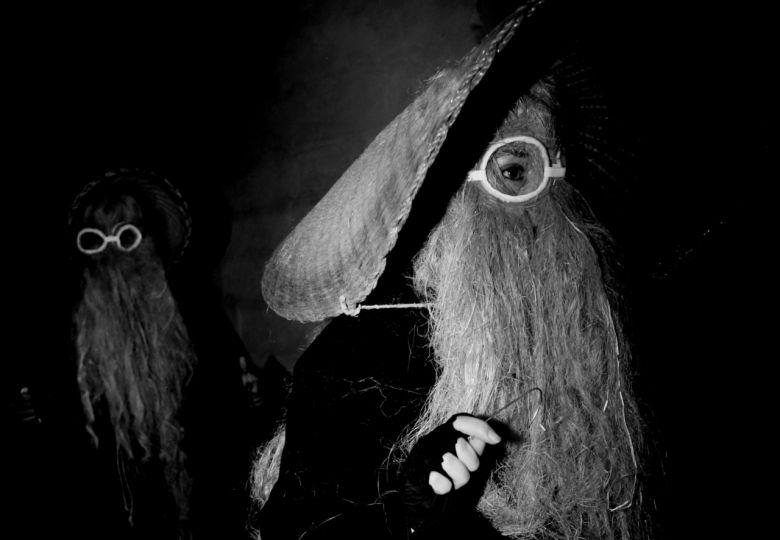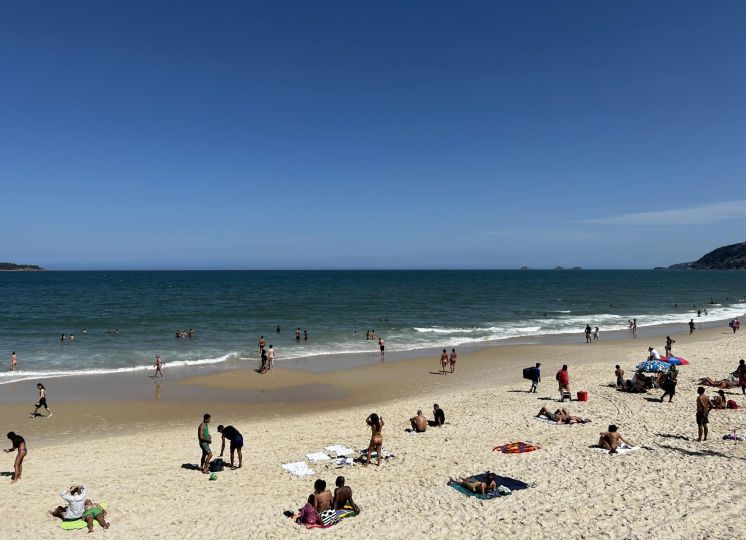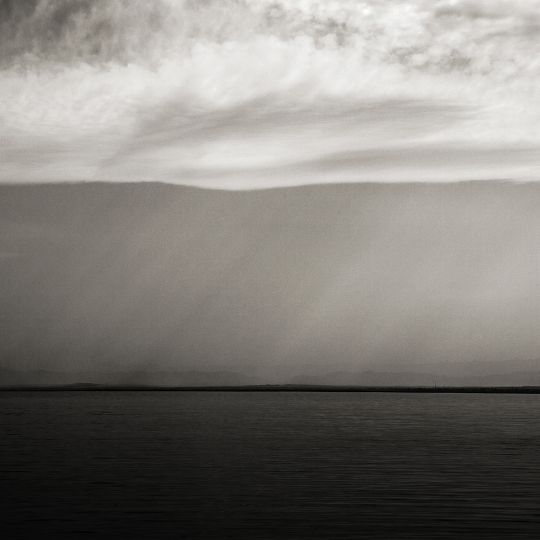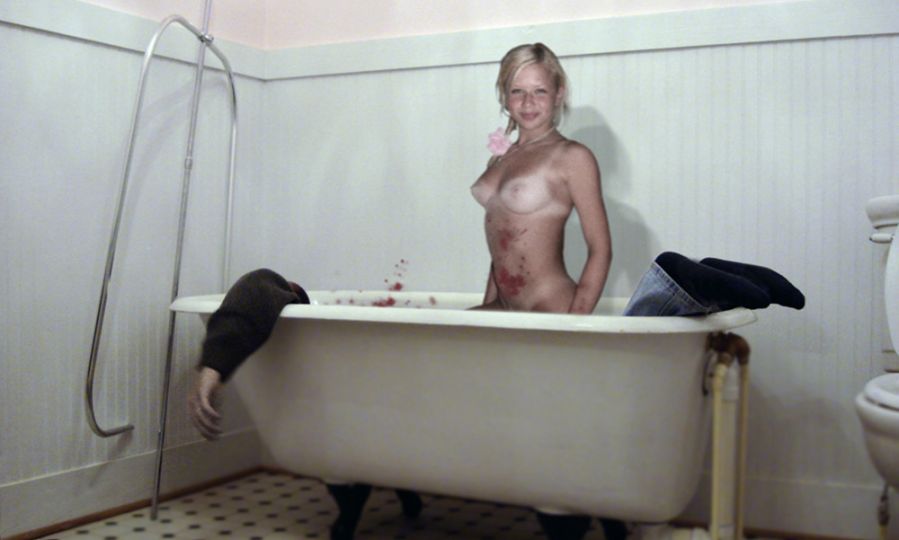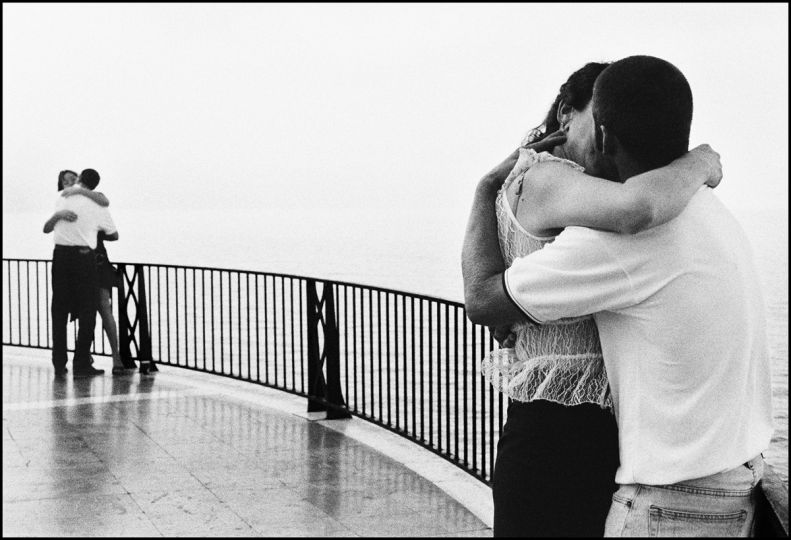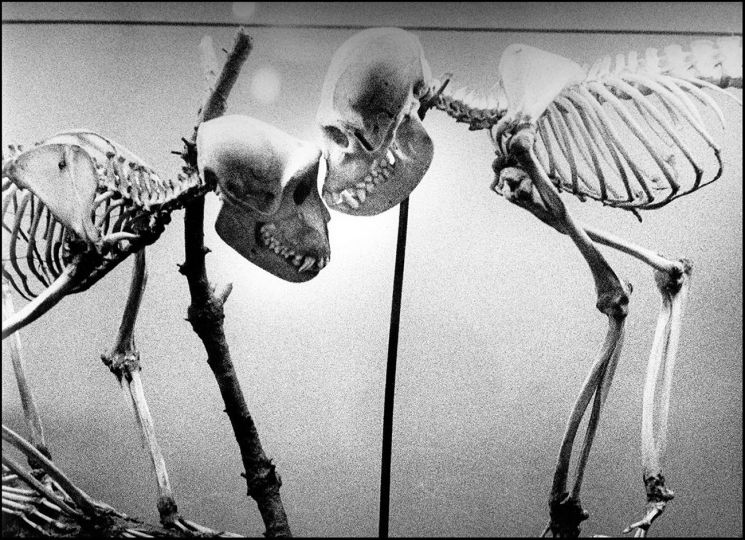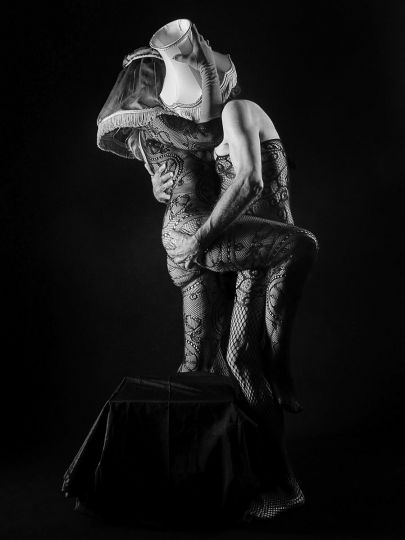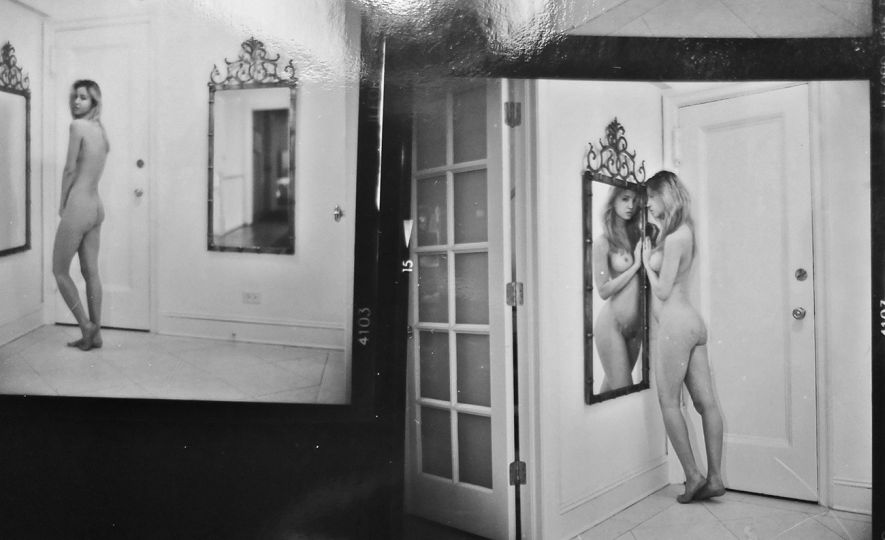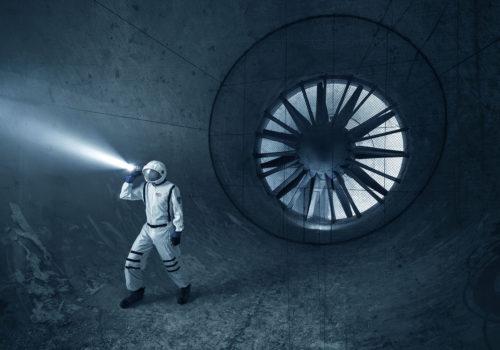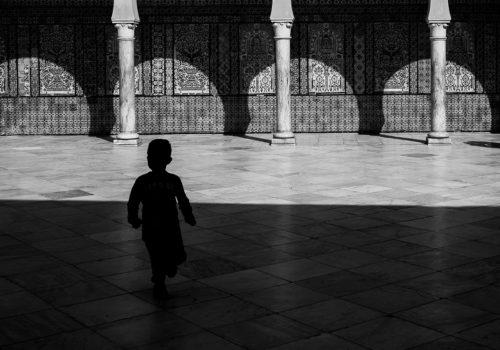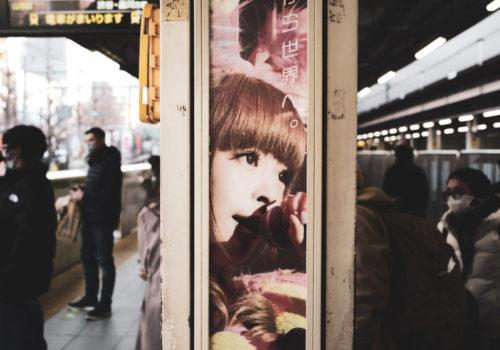Halcyon Days
Morning Aletheia
“Landscape pictures can offer us three verities: geography, autobiography, and metaphor. Geography is, if taken alone, sometimes boring, autobiography is frequently trivial, and metaphor can be dubious. But taken together, as in the best work of people like Alfred Stieglitz and Edward Weston, the three kinds of information strengthen each other and reinforce what we all work to keep intact, an affection for life.”
(in Beauty in Photography, Aperture 1981)
Evi Karagiannidi’s landscape photographs in Halcyon Days abide by these principles: about geography and autobiography — she chooses a very typically Mediterranean, moreover Greek, environment as her subject matter, in fact a particular landscape that is close to her family’s history. It is her geography as well as her heritage embodied in the morning light on a dry vegetation. She frames it tightly in small exquisite squares: symmetry, balance, order are the tools whose efficiency is displayed within a world (1×1) that induces diagonal and circular relationships (male and female), dualities either in harmony or tension. These photographs are delicately and intricately composed; chaos has been tamed, reordered, made comfortable if not intimate, maintaining a particular breath of tension though. These extracted squares decidedly ignore the blue sky we can imagine towering over the photographer’s personal experiences. They also stay away from the trite, the obvious, the spectacular, and the easily romantic approach to beauty — the colored light of sunrise or sunset, the classically simple and composed landscape, the whites and the blues too obviously linked to a ridiculously touristy preconception of what a Greek landscape should look like. These photographs are grounded, textured, anchored in subject matter that reveals itself as deeply connected to the earth, but here Gaia is divorced from Uranus, sea and sky are absent, here too, the Chaos of the world has been creatively harmoniously reshaped thanks to Evi, the “Seer,” her keen sensitivity and eye. “Je dis qu’il faut être voyant, se faire voyant, […] inspecter l’invisible et entendre l’inouï.” [I declare that we must be seers, become seers and investigate the invisible, and hear sounds that have never been heard] (Arthur Rimbaud, in “Lettre à Demeny”, May 15 1871)
Evi Karagiannidi’s photographs reach beyond the known, relying on senses, intuition, catching the essence of the moment, taming any reflection of an exquisite morning light. These experiences do not assert themselves through photography as pure visual ones, there is a haptic quality to the photographer’s rendition of her landscape—because it is definitely “her” landscape, a safe haven that she invites us to share. These landscape photographs feel so delicate, precise yet harmonious, intimate, shaped by the photographer’s experience and sensitivity that the viewer cannot but peruse them and realize they are indeed biographical and metaphorical. There is still something in Karagiannidi’s photographs that we rarely encounter (less and less these days with the current tide of color-boosted, HDR-ed, happy-bunny contrasted, overly sharpened, heavily filtered Instagramfodder, images we voluntarily or unwillingly submit ourselves to via social media and consumeroriented photo magazines and websites. Here we encounter subtle care and delicate attention paid to the light. They are no photographers they who cannot see and use light properly, with discretion, subtlety, care, respect,… and love. More than being about the landscape these photographs are about the light bathing the grasses, the bushes, bouncing off branches and trunks.
Now it is time for a last consideration, a crucial one for the medium used here : the print. Nothing can replace the experience of a genuinely good print, it is an object of infinite joy, not the fun, superficial, short-lived joy experienced on the screen of a smart-phone or a tablet when visual impact is expected, no, the deep joy that is generated by the slow contemplation of a print whose paper has been carefully selected to reflect the right amount of light, and share a velvety world of nuances and subtleties. Reader, believe me, experience the presence of a genuine print, and take the time to indulge in their haptic rendition of light, in the subtlety of their colors and details. Evi Karagiannidi’s photographs are not to be just looked at, these are invitations to contemplation. Some may even meditate in their presence because of the infinite amount of details included, inviting them to lose their thoughts, their souls. The whole they form once squarely framed by the “eye, heart, and mind” [Henri Cartier-Bresson] of their author should not be met with a quick scan of the impatient eye. On the contrary, the patient minds will give itself enough time to let these slices of time, space, light and experience touch their souls and hearts. We are in the presence of emotional and visual epiphanies (alètheias as Martin Heidegger would call them) when time and heart stop captured on a “sensor” at the moment of their revelation to the photographer who then decided to share them with us, the absent witnesses, “absent” because we were not present at the decisive moment of creation, “witness” because in spite of our absence these moments and images can reach extremely deeply and intimately into our psyche, feeling as familiar, uncannily familiar, as if they were already there… because they were. Beyond the worlds to which each of these photographs is a window, there is a galaxy-effect that is achieved through the accumulation of these photographs, as selected and displayed in this book — the same experience could be achieved in an exhibition. Each of them stands as a star in the summer night sky of the series, be it portfolio, exhibition or book. At this stage of their experiences, the viewers should become aware of the Gestalt effect of the grouping of these images. These are definitely not sequenced randomly. There is a progression to be observed here: from the centered subject surrounded by an ocean of subdued details to photographs excluding any “hero” from the center of the frame and inviting our eyes for a quiet and contemplative summer walk around their very centers, flirting with the edges, engendering a welcome tension, between quiet center and active edges, within the harmonious shape of the square, inviting to a circular ambulation within it. Let me conclude with a few lines from Endymion (1818) by the British poet, John Keats, which these photographs confirm: “A thing of beauty is a joy for ever: Its loveliness increases; it will never Pass into nothingness; but still will keep A bower quiet for us, and a sleep Full of sweet dreams, and health, and quiet breathing.”
Bruno Chalifour, December 2019
http://www.evikaragiannidi.com/

